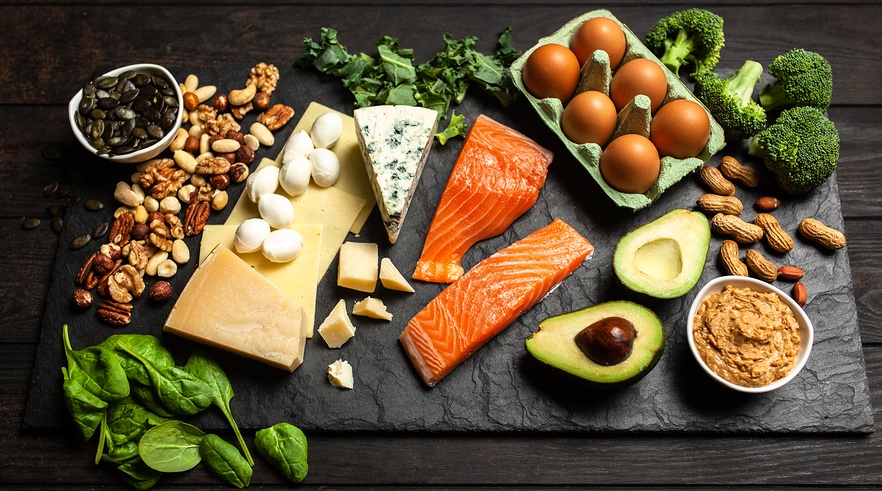Five Tips To Help You Start A Keto Diet
Are you contemplating "going keto" in the last few days? You may be interested in the ketogenic lifestyle. It has become very well-known in recent years. It isn't difficult but requires some consideration. If you are familiar with American food It could be time to make some modifications. The first step is to discuss your medical doctor's recommendations and get their permission to switch to a keto diet. These five tips will help you get started on keto once you've received a positive opinion from your physician. Have a look at this can keto diet cause high cholesterol for more.

1. Research The Keto Diet
There are many different views about whether they would prefer to ease-in or jump in to a new way of life. Knowing more about the ketogenic lifestyle will assist you in making an informed decision. Knowing how your body processes carbohydrates and fats to produce energy is essential to adhering to a ketogenic diet. Begin by gradually reducing your carb intake for at least a week. When you're done be aware of your body's cues and keep reducing. Individuals are different, but the daily reduction in carbohydrate intake between 40 and 50g (about four slices of bread or a portion of pasta) is typical. A lot of people reduce their intake by about 50g each day and keep doing this for the remainder of the week. You probably won't be in ketosis until your intake of carbs drops to about 50g each day and you hold it for several weeks, but you may notice this pattern of progression causing weight loss even before reaching ketosis. You have the option of introducing other foods into your menu if you are not satisfied with the result.
2. Make Sure You Stock Up With Keto Friendly Foods
If you don't have the right food choices you'll struggle to stick to the ketogenic diet. In order to maintain your calories it is essential to have plenty of protein and healthy fats.
Beef as well as pork, poultry and seafood
Nuts and seeds
Moderation when it comes to cheese
Avocado
Canola, peanut, and olive oils
Leafy greens, leafy leaves and cauliflower, along with asparagus, cucumber, and rice-cauliflower, are non-starchy.
Like any meal plan, sticking to it requires a good amount of discipline. If you're unable to resist the urge to indulge, filling your shelves with healthy alternatives will keep you on track. See this ketogenic diet and weight loss for info.

3. Get Rid Of Carb Rich Temptations
If you're planning to jump in without making gradual changes to your diet as mentioned in the previous paragraph, and you enjoy bread, pasta, rice as well as other high-carb food items but are planning to adhere to a ketogenic diet, you should eliminate those foods prior to beginning your new diet. You should take the time to go through your pantry and determine if you want to cut back or donate the foods that don't match the food plan. While everyone is different in their ability to achieve and maintain ketosis levels the ketogenic diet typically requires that your intake of carbohydrates be restricted to around 5 percent of your daily calories. The highest concentration of carbs in non-starchy vegetables that you consume. They are high in carbs (read labels to become more aware) and are , therefore, prohibited on keto::
Yogurt and milk, cereals and pasta
Rice, quinoa or Couscous
Starchy vegetables like peas, potatoes, and corn
Legumes like red beans, navy beans, black beans and navy beans contain lentils.
Cakes, pies, cookies and desserts of all kinds
Regular soda pop and fruit drinks
Sugar, honey, and molasses
4. Prevent The "Keto Flu."
While it is unlikely that you will experience discomfort following the ketogenic diet, there have been some reports of people experiencing the "keto flu". Some people experience nausea, lethargy, and muscle cramping when they switch from a normal diet. If you are experiencing these symptoms, it's likely your body reacting to a shortage of carbohydrates. This may last for several weeks. During this time, be certain to drink plenty of fluids in order to fight off the "keto flu". You are more aware of your body than anyone else. Call your physician to discuss your symptoms. Check out this best fruit for keto for recommendations.

5. Plan For Other Household Members
It's possible that you're enthusiastic about the keto diet but not everyone in your home will be. Do you have the ability to cook and consume diverse meals with the members of your family? Can you resist eating carb-heavy foods if your family is fond of them. These can make or break the success of your keto dietand it's essential to be aware of these things prior to time. If your family members do decide to switch to the keto lifestyle take note that it may not be appropriate for all. The keto diet shouldn't be recommended for pregnant women, kids and athletes as well as people with type 1 diabetes. This is why it's crucial that everyone in your home consults with their healthcare provider prior to beginning the keto diet. |


 新浪微博
新浪微博 QQ空间
QQ空间 人人网
人人网 腾讯微博
腾讯微博 Facebook
Facebook Google+
Google+ Plurk
Plurk Twitter
Twitter Line
Line
